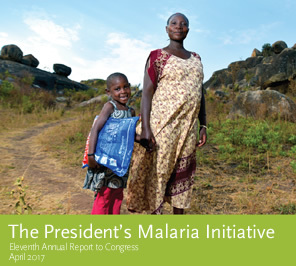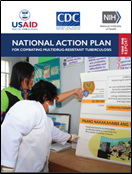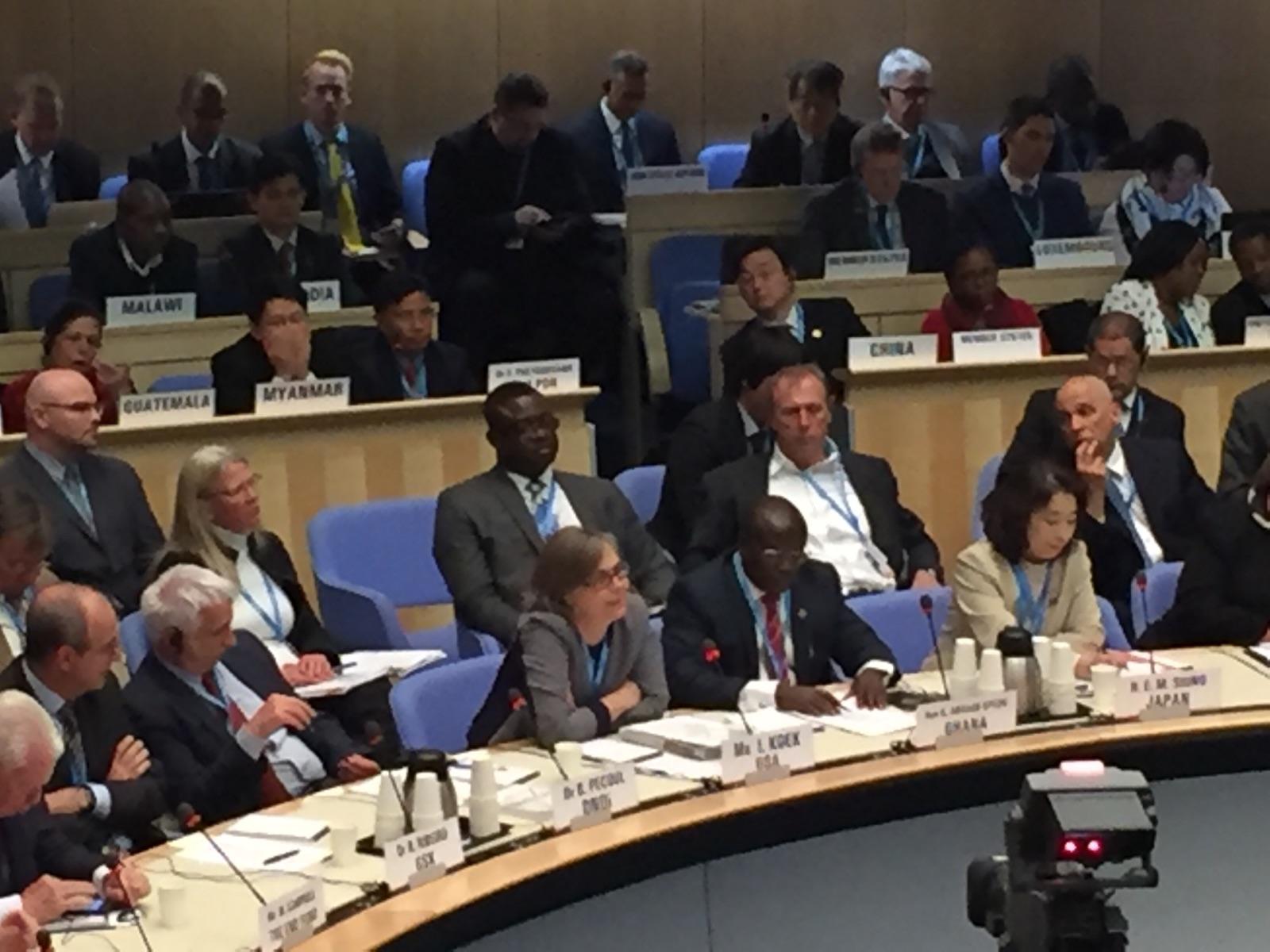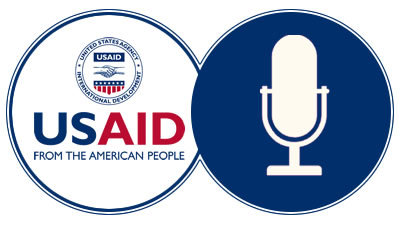
April 2017
World Malaria Day 2017

World Malaria Day is observed on April 25th to call attention to the disease and to mobilize action to eliminate it. The U.S. President's Malaria Initiative, in partnership with national malaria programs and communities, reached more than 480 million people at risk of malaria across sub-Saharan Africa last year. Nearly seven million lives have been saved since 2000.
The story of malaria control over the past decade is powerful, compelling, real, and accessible. On the occasion, PMI released its 11th annual report to Congress, which highlights the key role the U.S. Government has played in the global progress against malaria. For a snapshot of PMI's achievements, read PMI: By the Numbers. Also, check out USAID’s Exposure photo-story Spraying to Save Lives In Kenya; and USAID’s Medium feature Lifting the Burden of Malaria.
We begin our podcast series with Dr. Bernard Nahlen, PMI’s Deputy Coordinator, on his background and inspiration to join the fight against malaria and progress made over the last few decades.
Also check out MCSP’s World Malaria Day feature titled One Disease, Many Faces
Check out a malaria dashboard created by USAID’s Economic Analysis and Data Services
World TB Day 2017

USAID India commemorates World TB Day 2017.
The world came together to recognize World Tuberculosis (TB) Day on March 24th with a diverse array of events and communications in the majority of USAID’s priority TB countries. In addition to traditional awareness raising events, this year was marked by an emphasis on the importance of tackling drug-resistant TB and the highlighting of new TB drugs. Some notable events included India'/s Bollywood star, Amitabh Bachchan, partnering with USAID on a Call to Action For a TB-Free India, public pledges of commitment from high-level government officials in USAID TB priority countries Ethiopia and Kenya, and the Minister of Health in Nigeria announcing the launch of GeneXpert technology and improved integration of TB services. USAID partner, Stop TB, captured the global momentum and significance of the day by working with 31 cities in 13 countries to raise awareness of the leading infectious disease killer through the challenge, "Light up the World for TB." The cities lit up key landmarks in red to show their commitment to ending the disease, this year’s cities included: Kyiv, Ukraine; Karachi, Pakistan, and Geneva, Switzerland.

In addition to the World TB Day public events, USAID, CDC and the National Institutes of Health (NIH) released the National Action Plan for Combating Multidrug-Resistant Tuberculosis: Year One Report. The National Action Plan is a 5-year plan that builds on the U.S. Government's domestic and global TB strategies, as well as the WHO’s END TB Strategy. This interagency report notes the achievement of all year 1 goals and provides a summary of key highlights of progress made during the first full year of implementation.
Neglected Tropical Diseases Summit 2017: April 19 - 22, Geneva

Irene Koek, USAID’s Senior Deputy Assistant Administrator for global health, speaks at the WHO global NTD partners meeting in Geneva.
This year marks the 5th anniversary of the World Health Organization's Roadmap on NTDs and the London Declaration. To celebrate this milestone, the World Health Organization, Uniting to Combat NTDs and the global NTD community hosted the NTD Summit in Geneva, Switzerland from April 19 to 22. On this occasion, the World Health Organization launched its Fourth NTD report, Integrating neglected tropical diseases into global health and development. Irene Koek, USAID's Senior Deputy Assistant Administrator, provided remarks during the "Accelerate" panel discussion, sharing USAID NTD Program's achievements and lessons from the past 10 years to accelerate progress to 2020. As one of the main donors in the fight against NTDs, USAID shared a 10 Years of Progress brochure, featuring examples of the program's successful public-private partnership, as well as the NTD donor landscape, which visually maps out the focus of donor investments.
GLOBAL HEALTH VOICES
It Takes a Village! Meeting Multiple Health and Development Needs of Girls and Young Women in Sub-Saharan Africa
Read a blog post from Nagesh Borse, a Senior Technical Advisor in the Research Division of the U.S. Agency for International Development's (USAID's) Office of HIV/AIDS. He describes how USAID, in collaboration with the U.S. President's Emergency Plan for AIDS Relief, the World Health Organization and UNAIDS recently co-convened the Eastern and Southern Africa Regional Consultation to discuss ways to help keep adolescent girls and young women in sub-Saharan Africa HIV-free.
Vaccines work... when vaccination works
Read a World Immunization Week blog post by Rebecca Fields, Senior Immunization Advisor and Grace Chee, Health Systems Strengthening and Equity Team Lead from USAID’s flagship Maternal and Child Survival Program (MCSP). They describe the methods and tools used by MCSP to reach the poorest and most vulnerable children with vaccine coverage, along with the need for strong management and commitment from all levels of health personnel to ensure that vaccination works so that vaccines can work.
HIGHLIGHTS
6th East African Health and Scientific Conference and International Health Exhibition and Trade Fair

Anne Casper, U.S. Ambassador to Burundi, opens the 6th East African Health and Scientific Conference and International Health Exhibition and Trade Fair in Bujumbura, Burundi.
Held in Bujumbura, Burundi on March 29, this conference provided an opportunity for East African leaders, academics, healthcare providers and private sector representatives to explore responses to disease outbreaks and how to improve the health of all East Africans. The theme of the conference was preparedness for and control of disease outbreaks, epidemics, and pandemics, in the context of changes in weather patterns, globalization, and gaps in health systems. USAID provided support to the conference as well as to the establishment of the new East African Health Research Journal. Published with support from USAID and K4Health, the new journal will focus on health research in East African countries.
Read the first issue on The East African Health Journal [PDF, 2.4MB]
Zika Regional Monitoring Visits

In the Dominican Republic, USAID staff meet with a family affected by Congenital Zika Syndrome.
In April of 2016, the Department of State declared that the Zika international infectious disease outbreak was a public health emergency, and that it was in the U.S. national interest to respond. Shortly after, USAID began mounting its response within the Latin America and Caribbean region. Between March 26-April 5th, 2017 members of the USAID Zika team split into three groups to conduct simultaneous visits to different countries in the region, one year after initial implementation.
The Central America team visited El Salvador, Honduras, and Nicaragua, where team members met with local project staff, discussed educational campaign strategies, and observed health care provider trainings. USAID partners in the region are ramping up vector control efforts and disseminating key messages ahead of the upcoming rainy season. Agency staff saw this first-hand in Nicaragua, where they accompanied community volunteers on household visits.
The Caribbean team met with the Ministry of Health in Jamaica to understand the outbreak on the island and went to visit some projects, including the launch of a "Zika club" at a local school. The same group later went to the Dominican Republic, where they visited hospitals, the national center for control of infectious diseases, vulnerable urban communities, and even families affected by Congenital Zika Syndrome.
In South America, team members visited with the awardees of the Grand Challenge for Global Development and learned about the Centers for Disease Control and Prevention's research efforts in Colombia. In addition to learning about national efforts in monitoring the outbreak spearheaded in Bogota, the team traveled to Cali, where USAID is contributing to local vector control efforts by evaluating the potential of new innovations to improve targeted resource allocation.
Together, the monitoring teams gathered a comprehensive view of how the Agency's investments are protecting vulnerable populations and reducing the threat of Zika across the region.
UPCOMING EVENTS
World Health Assembly 2017: May 22-31
The World Health Organization will host its annual general assembly the last week of May. This meeting is where the best and brightest in the field of global health come together to review the state of the world’s health, assess progress made and determine new priorities going forward. Delegations from 194 countries will agree to resolutions, adopt action plans, supervise finances, review and approve the proposed budgets, discuss key public health issues, and determine the policies of the World Health Organization. The Secretary of Health and Human Services generally leads the U.S. delegation to the World Health Assembly. Jennifer Adams, USAID’s Acting Assistant Administrator for global health, will join the U.S. delegation along with a few senior advisors from USAID’s Bureau for Global Health. This year’s meeting is particularly relevant as a new Director General will be appointed by member states and take office next July 1. The top contenders for the job are: Dr. Tedros Adhanom Ghebreyesus of Ethiopia, Dr. David Nabarro of the United Kingdom and the Republic of Ireland and Dr. Sania Nishtar of Pakistan.
GH MEDIA MENTIONS
Investing in Rwanda’s Health: A Holistic Approach to Boosting Nutrition and Wellbeing
Photo sources for top banner left to right: James Pursey/EGPAF, Marcy Erskine/IFRC, Jameel Ahmad/JSI/PAIMAN.

